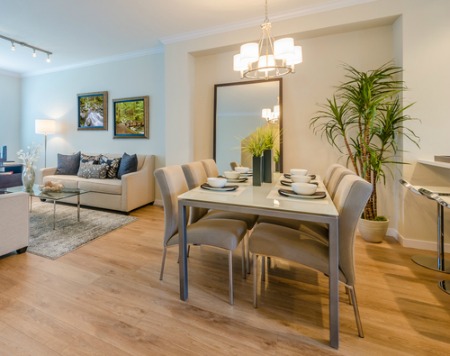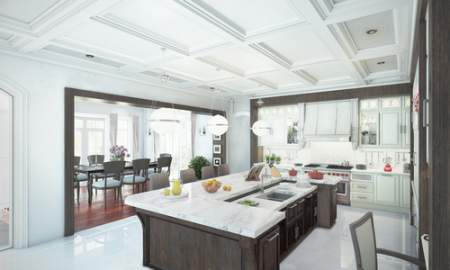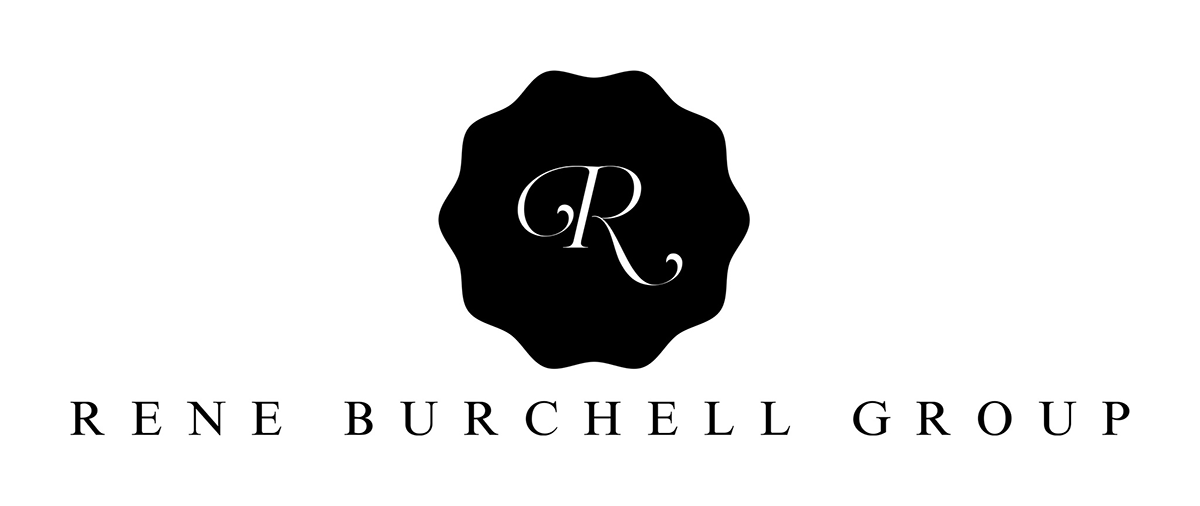Staging your house isn’t optional, it’s a pertinent step in the process of selling your home. This effort of getting your property dressed to the nines is not intended to cover up undesirables in the home, but to get the home in the best condition it can be so that you can get top dollar and sell quickly. Here’s your ultimate guide to staging.
You Don’t Have to Do It
 Although it’s true that staging isn’t optional, you don’t have to do this part yourself. The good news is that there are professional contractors and companies with experience in real estate sales that can get your home show-ready in no time. You may find it worth the investment to have a pro come in and present the way buyers shop, but there are still steps you have to take in preparation for that professional leverage.
Although it’s true that staging isn’t optional, you don’t have to do this part yourself. The good news is that there are professional contractors and companies with experience in real estate sales that can get your home show-ready in no time. You may find it worth the investment to have a pro come in and present the way buyers shop, but there are still steps you have to take in preparation for that professional leverage.
Pack it. Organize it. Store it. Get Rid of It | Killing the Clutter Bug
Realize that you’re killing two birds with one stone in this step. First, you’re doing what it takes to get your house model-home worthy, but you’re also preparing for your pending move. Time to thin the herd of your belongings.
Do not try to eat an elephant by ripping every room in your house apart and scattering stuff everywhere to determine whether or not you need it. That just creates chaos and chaos creates stress. Instead, dedicate yourself and your energies to one room at a time until each room of the home has been decluttered, and you can move to the next round, which is cleaning.
When you dive into the decluttering of a room, take a trash bag with you. Also, bring a file or storage box for securing important documents. Include a photo box or a box of nostalgia for saving sentiment. Then, sort remaining belongings into three piles. The first pile is things you need to keep in the here and now because you’ll be using it between now and the time you move. Next, a collection of things you know you don’t want to get rid of, but probably won’t use in the next few months. Finally, a pile of things you know you don’t need to take with you. That last pile can convert into a yard sale or donations. Go through everything – clothes, dressers, closets, cosmetics, collectibles, and touch every item in the room.
When that room is sorted, remove the trash and discard it. Set aside in the next room the filing system and nostalgia box. Take the pile of don’t want items to the garage, attic, or another organized area for a yard sale or donation materials.
Next is the pile of things you’re keeping but won’t need between now and moving day, so your task here is to pack those items into a labeled box and move it in an area for the storage unit or moving truck.
Finally, you’re left with a pile of things you know you need, and now have adequate space to organize tidily in the room.
Next, do the same thing with furniture. What must you keep now, what will you store for your move, and what can you eliminate? The less furniture in the house, the better. Too many furnishings can make space feel cluttered, stuffy, and small.
When you’ve completed the decluttering process, you’re ready to move to the next step: Depersonalizing.
Safety and Security
If you have any valuable items, store them in a secure place, and do the same with weapons or other belongings that shouldn’t be in the hands of strangers. People will be coming through your home, so make sure your interests and their safety are protected.
Pets
You may find it best to find a safe place for your pets to hang out during showings. Your potential buyers may have allergies or not be pet-friendly. Your animals may get stressed out having strangers parading through their territory. Be considerate to everyone and have your pets safely away for the day.
De-Personalizing and Neutralizing
 Depersonalizing is the process of removing your personality from the house. During your tenure as the homeowner, you’ve imbued the home with your beliefs. Maybe you’ve hung religious symbols throughout the environment. Perhaps there are books about political concepts or religious learning that may offend someone of a different faith.
Depersonalizing is the process of removing your personality from the house. During your tenure as the homeowner, you’ve imbued the home with your beliefs. Maybe you’ve hung religious symbols throughout the environment. Perhaps there are books about political concepts or religious learning that may offend someone of a different faith.
You may have overlooked many of your belongings in the first pass because you were trying to identify the basics of keep, pack, and discard. But now it’s time to take that to the next level. Take down your framed portraits. Safely tuck away those salt and pepper shakers, bells, skunks, or other collectibles you were so proud to display. Remind yourself: You’re moving. This is part of the process.
And now your house should be looking rather bare.
Now check out your style. How’s the wallpaper? How bold are the paint colors? How much personality is in the carpet? It’s no longer about your creative expression of self, but now it’s about creating a clean slate on which potential buyers can build their dreams.
Paint walls a soft, warm, neutral tone like beige, pale gray, sage green, or other calming colors. Remove wallpaper that might not suit every style. If there’s red shag carpet in a room with wood panels, you may need to tone down that volume with a more generic design.
The Clean Machine
Now you’ve reached a part of the journey where you can either rest and outsource the task, or you can roll up those sleeves and psyche yourself up for a deep-cleaning session. You choose. Either way, though, your house has got to be cleaner than you remember it could be, cleaner than you’ve seen it before. Clean from ceiling fans and air vents to bleached bathrooms and baseboards. This is about washing windows and scrubbing doors. About wiping doorknobs and light switch covers.
Above anything else you can do, cleanliness sells.
One Two, Skip a Few: Doing the Outside Next
You’ve spent some time reducing your belongings, packing and storing your things, cleaning and organizing the inside of your home. Take a break from that environment and turn your attention to the outside of the house.
Curb appeal is everything. A person’s first impression is what will make or break that person’s experience when touring your home. They’re either more excited or more hesitant based on their gut reaction when first seeing your property.
The easiest place to start is ornaments, toys, decor, and debris. If you can pick it up and move it, consider storing it or eliminating it. This purge includes that pink flamingo, the garden gnomes, wind chimes, the cute “no pooping” dog sign in the yard. This includes bicycles and kiddie swimming pools. And, of course, trash. Don’t forget lawn furniture. Minimize as much as possible.
Next, turn to the weeds. Get rid of any weeds that you can. If there’s lawn, mow it. If there’s a bush, trim it. If there’s a tree, groom it. The yard should be inviting, well manicured, and give the appeal of move-in-ready.
Take it to the next level by polishing and repairs. Consider power-washing the exterior of the house, throwing on a fresh coat of paint, replacing window screens, sanding chipped wood and otherwise making sure the structure looks well maintained.
Your Third Sweep | Upping the Anti on Attractive
Your first task was to declutter – to thin your belongings to bare basics, even the furniture. Your next step was to remove your personality by storing away personal items such as photographs, political statements, or items that might alienate certain buyers. Now, it’s time to do your third sweep and see what eyesores you pick up on when you walk back into the house. Your perspective will be different now than it was when you began because now the house feels less personal – your things are gone, it’s looking bare, and you can see it as a shell more than your home.
Replace doorknobs. Oil doors. Repair holes in the walls. Swap out cracked electrical socket covers with new covers. Tend to running toilets, leaking sinks, or other shortcomings. Put in a clean air filter. Look for any item that stands out to you as an attention-getter, and then replace or repair that item. Don’t forget to look at kitchen and bathroom fittings, too, such as cabinet handles and drawer pulls that might unfairly outdate a room. Under sink areas should be clean and dry.
Let There be Light
 Allowing natural light into a room, or creating a warmer atmosphere by adding light not only makes us feel good but can also make rooms appear spacious.
Allowing natural light into a room, or creating a warmer atmosphere by adding light not only makes us feel good but can also make rooms appear spacious.
Drapes, if there are any, should be hung from the ceiling all the way to the floor. This elongation gives the windows maximum glory, adding more perceived space.
If there are no drapes, blinds should be free of dust, wiped clean, and opened for showings.
On days when the home is being shown, turn on lights and lamps, even during the day. Your goal is to flood each room with as much light as possible.
Adding Illusion
With the removal of your belongings, the change in style and color, and the vacant feeling that’s come over the property, you may need to re-introduce some style. However, instead of giving the house your flavor, you’re keeping it more generic and less personal. Examples of adding personality back into a space could be with pictures of fruit in the kitchen, or pictures of flowers in the hallway; artwork portraying an ocean sunset hanging over the sofa. Small design elements like centerpieces and shelf accents can make the home feel more sophisticated, well-defined, and move-in-ready.
Tips and Tricks
Bathrooms get a lot of attention in open houses. These areas of the house are personal space, private areas, but spaces that get a lot of use. Of course, cleanliness is essential, but there are ways to improve the energy of the room, creating a spa-like feel to restrooms. Use crisp, clean white towels on display in bathrooms. Add un-lit candles to the vanity or bathtub. Use a stiff white hand towel near the sink with a clean bar of soap or soap dispenser, and perhaps a bottle of lotion and a box of tissue. You can also update a bathtub or shower with new caulking.
Kitchens also receive a lot of focus during showings. Households spend a lot of time gathering in kitchens where nurturing and nourishment are created. You can make a kitchen more inviting by having fresh-baked goods at showings. You don’t have to be a top-notch baker; you can use pre-made dough, or even store bought cookies added to a plate on the counter. The aroma has an enticing draw of its own, and there’s an instant sense of happy when there’s a treat out waiting. If you’re using store bought cookies, consider adding a sugar cookie or apple pie scented candle, so the sweet smell still lingers in the air.
Use fresh flowers as a centerpiece on the kitchen table. The flowers add the message that life blooms in that space. For the same results, add a plant or two to the kitchen counters, maybe even little-potted herbs.
Conclusion
You’re not trying to disguise a bad house but to showcase a great house. Staging isn’t about cover-ups and quick-fixes, but about updating the house with a fresh flavor before listing it on the market. Your goal is to create a vibe so rich, so inviting, so unforgettable that potential buyers feel compelled to submit competitive offers for your home. Show them why your house is worth their long-term investment, and why they’ll love living there. From curb appeal to the way the feel when they’re standing in the kitchen, you have the ability to influence the way potential buyers perceive the value of your home.
You don’t have to do the heavy lifting yourself. If you’re money-conscious, then you may have to do the dirty work. But if you’ve got wiggle room to work with leverage, you can hire organizers, cleaners, and designers to help you stage your house for sale.
Call Rene Burchell today at 469-877-3303 to tour available houses for sale in Frisco and surrounding areas.


